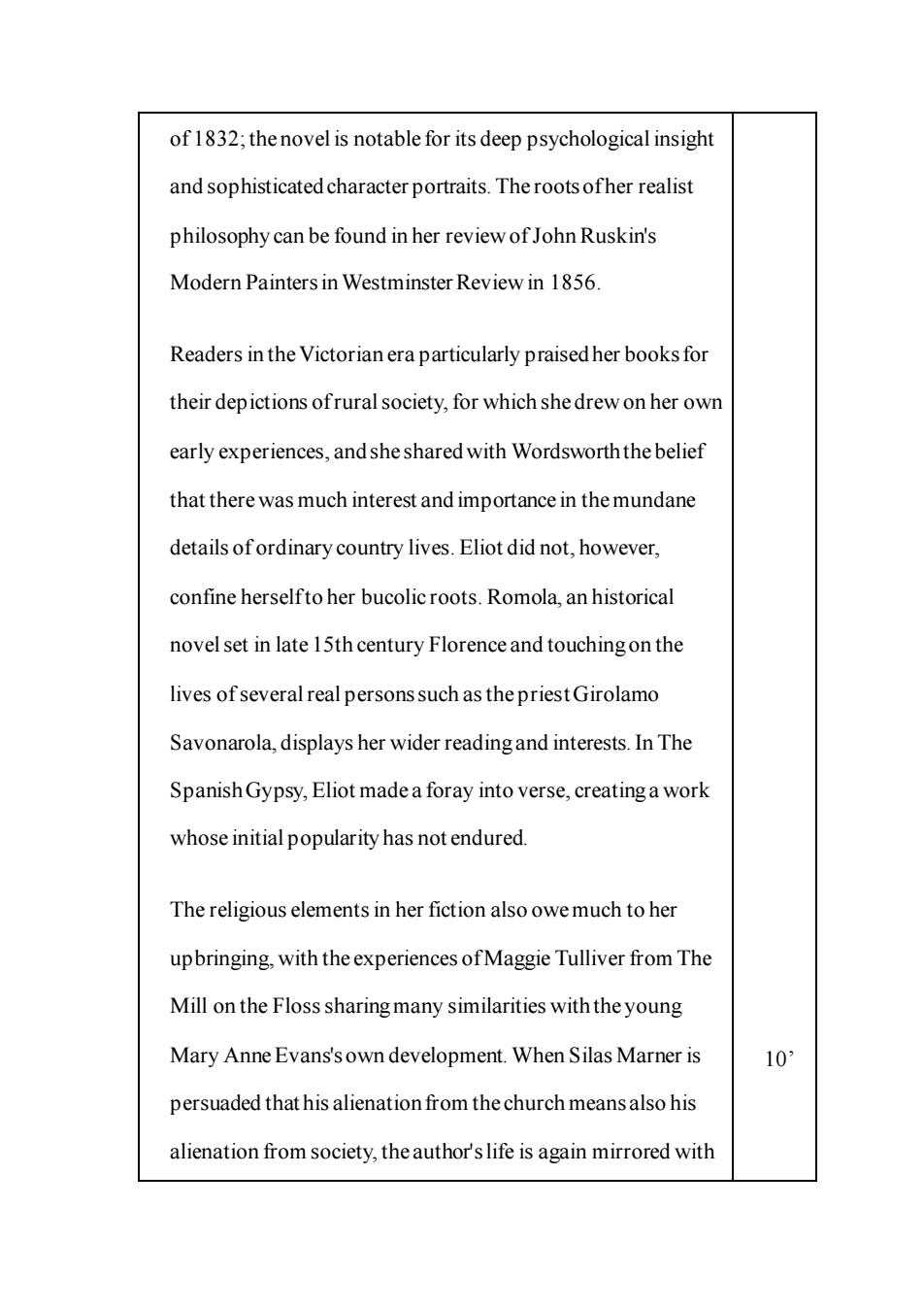正在加载图片...

of 1832:thenovel is notable for its deep psychological insight and sophisticated character portraits.Theroots ofher realist philosophy can be found in her review of John Ruskin's Modern Painters in Westminster Review in 1856 Readers in the Victorian era particularly praised her books for their depictions ofrural society.for which she drew on her own early experiences,and she shared with Wordsworththe belief that there was much interest and importance in the mundane details ofordinary country lives.Eliot did not,however, confine herselfto her bucolic roots.Romola,an historical novel set in late 15th century Florence and touchingon the lives of several real persons such as the priest Girolamo Savonarola,displays her wider readingand interests.In The Spanish Gypsy,Eliot made a foray into verse,creatinga work whose initial popularity has not endured. The religious elements in her fiction also owe much to her upbringing,with the experiences of Maggie Tulliver from The Mill on the Floss sharing many similarities withthe young Mary Anne Evans's own development.When Silas Marner is o. persuaded that his alienation from the church meansalso his alienation from society,the author's life is again mirrored with of 1832; the novel is notable for its deep psychological insight and sophisticated character portraits. The roots of her realist philosophy can be found in her review of John Ruskin's Modern Painters in Westminster Review in 1856. Readers in the Victorian era particularly praised her books for their depictions of rural society, for which she drew on her own early experiences, and she shared with Wordsworth the belief that there was much interest and importance in the mundane details of ordinary country lives. Eliot did not, however, confine herself to her bucolic roots. Romola, an historical novel set in late 15th century Florence and touching on the lives of several real persons such as the priest Girolamo Savonarola, displays her wider reading and interests. In The Spanish Gypsy, Eliot made a foray into verse, creating a work whose initial popularity has not endured. The religious elements in her fiction also owe much to her upbringing, with the experiences of Maggie Tulliver from The Mill on the Floss sharing many similarities with the young Mary Anne Evans's own development. When Silas Marner is persuaded that his alienation from the church means also his alienation from society, the author's life is again mirrored with 10’